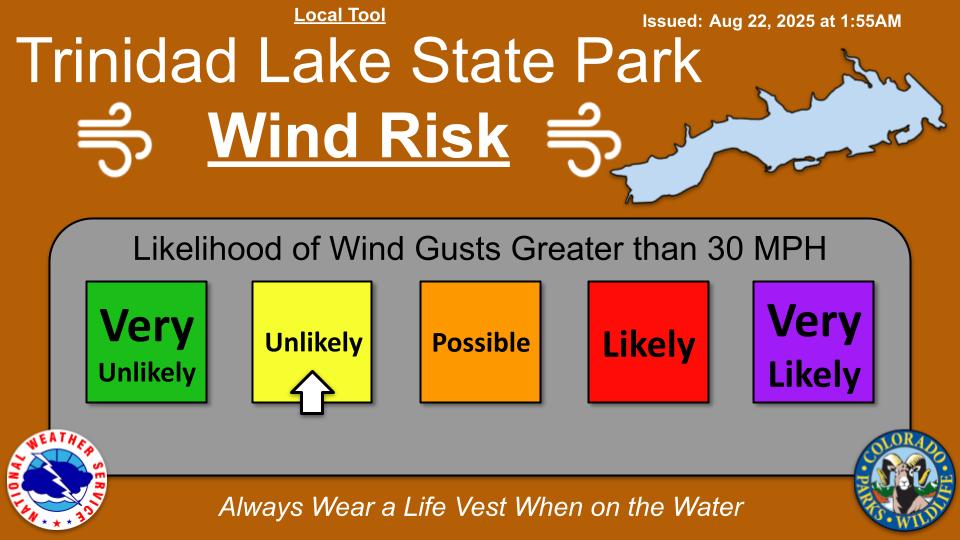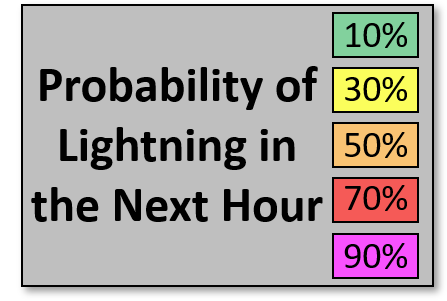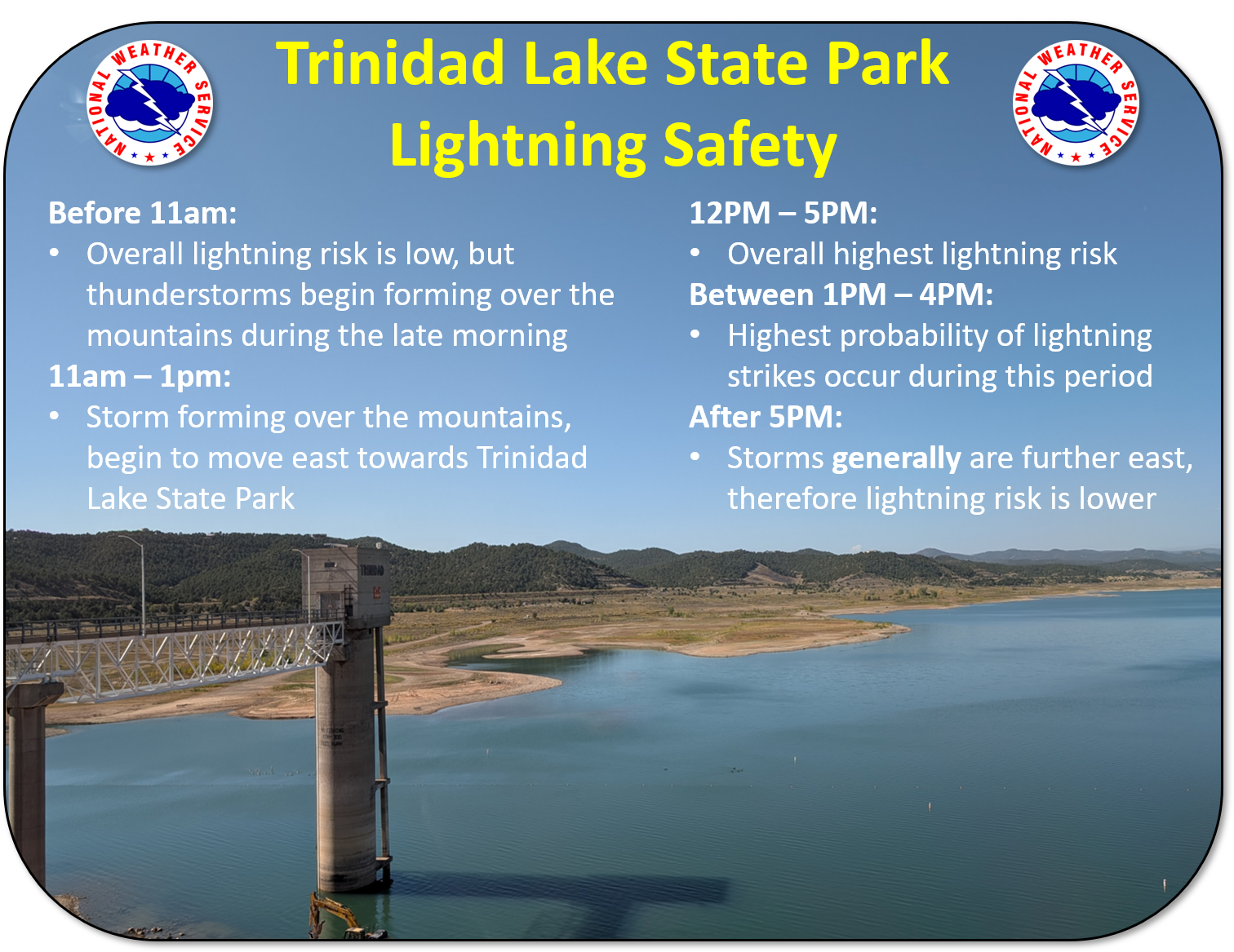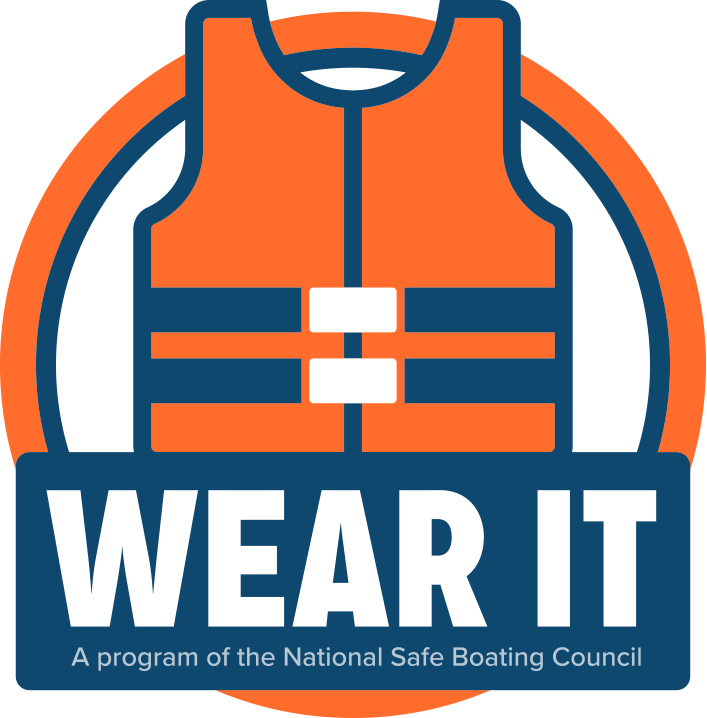Stay weather aware by downloading the FEMA App, a way that the National Weather Service in Pueblo can let you know of imminent weather risks by sending you notifications to your cell phone. For non-severe weather hazards, including winds, enable the SPS function in your FEMA app by following these steps.

The Wind Risk Tool highlights our confidence of if wind gusts greater than 30 mph will occur and the period of time those conditions will happen. Expect issuance between 6 am–7 am, May 1–Oct 31 each season.
Click on the map below to change the overall outlook or view hourly details.
| Period | Forecast |
|---|
An AI model that predicts the probability of lightning in the next 60 minutes using GOES-R ABI data.


If you absolutely cannot get to safety, you can slightly lessen the threat of being struck with the following tips. But don’t kid yourself—you are NOT safe outside. Know the weather patterns of the area you plan to visit. For example, in mountainous areas, thunderstorms typically develop in the early afternoon, so plan to hike early in the day and be down the mountain by noon. Listen to the weather forecast for the outdoor area you plan to visit. The forecast may be very different from the one near your home. If there is a high chance of thunderstorms, stay inside.

U.S. Coast Guard-approved safety equipment is required on all recreational boats. Here are some of the equipment requirements:
Other requirements, such as muffling devices and flags for towed sports, are outlined in the Boating Statutes & Regulations.